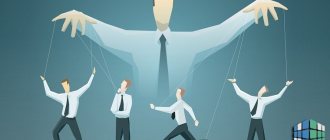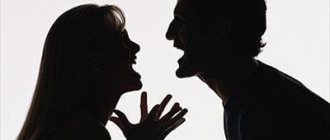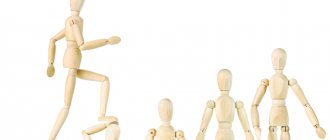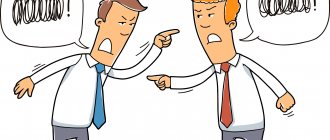All living beings: humans, animals, and birds can communicate using gestures and body language. In the animal world this is expressed more primitively and obviously than in the human world. This is due not only to the fact that people are accustomed to expressing themselves using speech, but also to the fact that people have a much richer palette of feelings and emotions than animals and birds, which mainly need to demonstrate readiness for mating games and claim rights to possession of territories.
Animal Gestures
What is sign and body language
There is a dual concept that divides sign language into involuntary and gestural. Everyone uses the first when they nod in response, wave in greeting, or raise their eyebrows in surprise. Sign language is a way for the deaf to express their thoughts and an opportunity for the deaf to understand someone else’s speech; it is a systematic system of hand movements, facial expressions and articulation that enhances the communication abilities of people with disabilities.
Significance in psychology
Psychology sees body language and gestures as a person’s hidden true desires, intentions and thoughts pouring out. This statement is true, because when communicating with each other, people involuntarily gesture, touch their faces, cross their legs. In every movement, experts reveal a hidden meaning that not everyone wants to express in words.
Gestures say a lot
Interesting. If you know how to read body messages, you can recognize in time lies, confusion and even love on the part of your interlocutor.
Open palms
Since ancient times, open palms have been considered a gesture demonstrating honesty and sincerity. It is not for nothing that in the judicial practice of some countries the person giving evidence puts one hand on the Bible and raises the other up with an open palm.
The meaning of this gesture is that by opening his palms, a person demonstrates his lack of weapons. That is, he has no other thoughts or intentions than those that he voiced in a conversation with you. So such a person can be trusted unconditionally.
Rules for interpreting body language
Sign language - how to learn it yourself
In most cases, body language reliably demonstrates the emotional state of its owner, but there are exceptions that can mislead the interlocutor. An example of false gestures could be:
- Scratching your nose while expressing a thought is not always a sign of deceit. This could be a manifestation of an allergy or a bad habit.
- Age-related characteristics of the development of intelligence and the emotional sphere make children and young people more active in matters of gestures, while older people use their hands and facial expressions less in communication. In this case, excessive gesticulation or its absence does not indicate emotional involvement or absolute coldness towards the interlocutor.
- Reticence and stiffness of the body are not always a sign of shyness or falling in love. It can also be a sign of absolute indifference or even veiled irritation.
Facial expressions
The face very clearly reflects the inner world of the owner. Eyebrows, eyes and lips are the most expressive interlocutors:
- a “drilling”, unblinking gaze paired with rhythmic breathing clearly indicates growing anger;
- a persistent smile is a clear sign of sympathy or even love;
- raised eyebrows and wide open eyes indicate that the interlocutor was not ready to receive the information presented;
- an asymmetrical smile, limited to raising only one corner of the mouth, indicates a condescending attitude or a complete lack of interest.
Astonishment
Attention! Each person has his own personal characteristics of facial expressions, which attentive friends or relatives can notice. For example, some people, trying to make fun of a friend, flare their nostrils, trying to hide a smile so as not to suddenly laugh.
Movements
Human communication with gestures carries even more information than facial expressions. The hands play the biggest role here. During the day, everyone makes thousands of movements, starting with a banal “hello” gesture and ending with complex combinations. Thus, among the speaking movements that are not common among the average person, we can highlight:
- Stroking oneself on the outer side of the thigh, shoulder or chest indicates anxiety and strong excitement - with the help of such touches the subject tries to calm himself down, reduce the level of anxiety, these movements can be seen in someone who asks him to forgive him for some actions, committed in the past;
- Rubbing the forehead can indicate a healthy puzzlement, an attempt to concentrate and understand, but at the same time, students, rubbing their forehead during a test, are giving themselves away - every teacher knows that this is the behavior of those who attempt to use a cheat sheet, falsely demonstrating the thought process ;
- Hands lowered into pockets, with simultaneously straightened shoulders and a straight back, speak of self-confidence and strength;
- Rubbing your eyes while addressing your interlocutor indicates that the conversation is being dishonest; this body movement reveals a liar.
Schoolchildren rubbing foreheads
Poses
While a person speaks, his body conducts its nonverbal communication with others. Almost unconsciously, various poses are adopted, which can often run counter to spoken language. The way the legs are placed, where the hands are placed, as well as the tilt of the head most directly demonstrate the true intentions that do not sound in the spoken phrases.
Learning to recognize nonverbal means
Many psychologists have paid attention to the recognition of nonverbal means. You can learn this skill from Alan Pease, Max Eggert, Carol Kinsey Goman and Peter Andersen.
Allan Pease
Alan Pease is sure that only 7% of information is transmitted through words, 38% by audio means, and 55% by non-verbal means. He considers body movements to be a reflection of people’s emotional state. This means that every gesture allows you to understand a person’s feelings, decipher his emotions for effective communication.
Max Eggert
Max Eggert also studied body language; he recommends impressing, persuading and achieving success with its help. He wrote a book that will help you understand the hidden thoughts of your interlocutor. Eggert is sure that there is no point in interpreting behavior based on one gesture. Reliable conclusions can only be drawn from a combination of three signs.
Carol Kinsey Goman
Carol Kinsey Goman is a Ph.D. She has written books about body language, nonverbal communication, and how to understand interlocutors. Carol recommends sitting up straight when communicating because this posture leaves a positive impression of the person. It gives you a feeling of confidence. When talking, you should choose a cool drink to drink. Those who drink warm liquid accept their partner trustingly and act gently. This interferes with business meetings.
The doctor advises you to relax your face in order to objectively assess the situation and your partners’ proposals. The warmth of further cooperation is influenced by a handshake. Therefore, before starting a discussion with your opponent, you should shake hands. Goman encourages people not to be afraid to pat their partner on the shoulder. It has been proven that the usual touch of a consultant to a client increased the time spent in the store. This led the buyer to spend more money.
Peter Andersen
Peter Andersen's book talks about how to correctly interpret body signals and how they differ in men and women. After reading it, you can understand the role of eye contact, touch and gestures.
Nonverbal communication is sign language. It includes body movements, facial expressions and intonation. If you learn their interpretations, you can build quality relationships with people. Many authors have devoted their works to this.
What do gestures say?
No matter how much a comrade, partner or colleague tries to convince him of his honesty, you can “read” his thoughts by paying attention to what his body says. The thought process of most people is based on images, which are often expressed in movements. Even the alphabet for the deaf and dumb was developed based on the perception of images and forms.
Open Gestures
Types of adaptation - what can be attributed to them, meaning
Conducting a conversation with someone who smiles broadly, holds his hands at chest level, with open palms facing mostly upward, should not alarm you - the person is open and does not hide his intentions. The conversation with him flows pleasantly, you immediately want to do business with him.
Closed gestures
Everyone tries to protect their personal space from an unpleasant person by crossing their arms over their chest and crossing their legs. If a conversation takes place between standing people, then the one who is not happy with the communication will definitely cross his legs, covering one knee with the other.
Gestures of lies
The human body, unlike the tongue, is not inclined to lie. Nonverbal communication is valuable for psychologists because it does not hide the truth, for which he wants to say “thank you.” This gratitude is not groundless: when the interlocutor lies, his hands seem to want to stop the attempt to deceive, they try to close the owner’s mouth, which is why liars constantly rub their nose, scratch their chin or lips, and rub their cheeks.
Gestures of an erotic nature
Women, like men, are capable of love, but at the same time they are afraid to say it. You can guess about sympathy by a constant smile. With the help of body language, you can hint about intimate desires if you pay attention to some little things:
- women slowly and sensually stroke their necks;
- men spread their legs wide apart while sitting on a chair;
- Lip licking is common to both sexes, but more so to women.
Interesting . If a girl on a date rubs her earring, the name of this gesture is not excitement, but carefully hidden excitement.
Aggressive gestures
Sharp gestures with hands, rubbing fists, unsmooth movements - all these can be called gestures of aggression.
Gestures of nervousness and uncertainty
The most popular gestures indicating emotional anxiety include picking at nails, tearing off cuticles, and biting off dead corners of fingertips. Ladies who carry a manicure file with them, during times of increased nervousness, unnecessarily file their manicure.
Biting nails from excitement
Gestures of appreciation and thoughtfulness
An index finger touching the chin or temple area clearly demonstrates a thoughtful attitude to the situation, an attempt to evaluate all the circumstances and make the right decision.
Bored gestures
A yawning interlocutor is a bored interlocutor. In addition to such a frank signal, you should be wary of:
- glancing at the clock;
- looking at your nails;
- deep and frequent breaths.
Confidential gestures
Hand movements moving from the body to the interlocutor mean emotional openness and disposition. This gesture can be seen in a hospitable hostess, who invites you to the table with a typical gesture and the phrase “please help yourself.”
Shrug
Shrugging is a universal gesture that means a person doesn't understand what's going on. That is, if something like this happens during a conversation, it means that the interlocutor does not understand what exactly you want to convey to him in your words, and why you are telling him this at all.
The shoulder shrug can be accompanied by three accompanying gestures. If a person shows you open palms, it means he is demonstrating his sincere bewilderment. If, while shrugging, he hunches over and covers his chest or neck with his hands, then he perceives your words as a threat. A raised eyebrow means that misunderstanding is accompanied by interest.
Ready to fine your colleague: a British company conducted an interesting survey
The inscription on a T-shirt encourages the audience to make purchases: what are fashion brands hiding?
Honda announced a recall of more than a million vehicles in China.
How to recognize simple gestures
The most primitive gestures can be seen in the behavior of children. They, asking to forgive them for their pranks, lower their heads down and do not raise their eyes. In a good mood, the gait takes on a bouncing character. In moments of embarrassment, hands hold each other, providing support to the timid owner.
Interesting . They say appetite comes with eating. The same can be said about psychology. When you begin to study a topic such as body language, you will involuntarily become drawn into deeper aspects of your personality.
It is possible to live peacefully in the human world without knowing the hidden abilities of the body. However, by understanding human psychology, you can give yourself a chance to feel more confident in society, to recognize lies, sincere sympathies and the disposition of others in time.
Smile with just lips
You can tell if a person is smiling at you sincerely by looking into their eyes. When someone experiences genuine positive emotions, they begin to “smile with their eyes.” That is, his eyelids squint a little, and cute wrinkles appear in the corners of his eyes.
Psychologists say that a sincere smile is one of the few gestures that is almost impossible to fake. You can stretch your lips, but you won't be able to create those crow's feet in the corners of your eyes. If these wrinkles are absent, then the person is not truly happy.
Laundry or dry cleaning has not been canceled: tips on how to reduce clothing purchases
A beautiful office is a big benefit: an unexpected way to increase productivity
What awaits black gold: analysts told what will happen to oil in 2021
Crossed legs
Psychologists Gerard Nirenberg and Henry Calero conducted an interesting study. They recorded about 2,000 conversations on video. And they discovered an interesting pattern. Not a single negotiation in which one of the interlocutors sat cross-legged ended in success.
If a person crosses their legs, it means that they are trying to isolate themselves from you (both mentally and emotionally). He doubts you, does not trust you and does not intend to enter into any agreements.
The problem does not necessarily lie in the bad attitude of the interlocutor towards you. It may be generally characterized by low susceptibility.
Long unblinking gaze
On a subconscious level, everyone knows that a shifting gaze is a sign of lying. Therefore, in order to disguise his insincerity, a person can resort to cunning. He begins to deliberately look into the eyes of his interlocutor for a long time. He doesn't look away for a second and doesn't blink.
Tight clothing: mistakes that cause buffet lovers to lose money
Experts named the product that has risen in price the most in Russia
Xiaomi sold a million Mi 11 smartphones in 21 days











